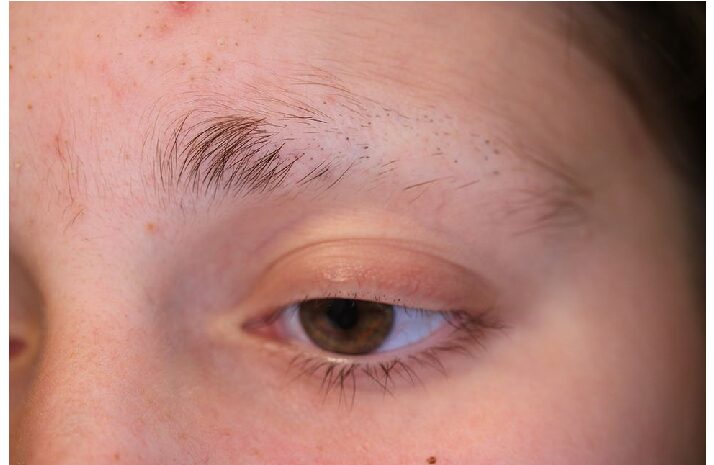Trichotillomania: Symptoms, Causes, Treatment
What are the symptoms of trichotillomania?
Trichotillomania is a mental health disorder characterized by a recurrent and irresistible urge to pull out hair from the scalp, eyebrows, or other areas of the body, resulting in noticeable hair loss. The symptoms of trichotillomania can vary from person to person but may include:
- Recurrent hair pulling: Individuals with trichotillomania have a strong urge to pull out their hair, which can lead to significant hair loss. They may pull out hair from the scalp, eyebrows, eyelashes, or other body parts.
- Tension or anxiety before pulling: Before pulling out hair, individuals with trichotillomania often experience a buildup of tension or anxiety. Pulling out hair is a way to relieve this tension, although it is usually followed by feelings of guilt, shame, or regret.
- Sense of pleasure or relief after pulling: After pulling out hair, individuals with trichotillomania may experience a sense of pleasure, relief, or gratification. This reinforces the behavior and makes it more likely to recur.
- Hair loss: Continued hair pulling can result in noticeable hair loss, leading to bald patches or thinning hair in affected areas.
- Preoccupation with hair pulling: Individuals with trichotillomania may spend a significant amount of time thinking about hair pulling, planning when and where to pull, or trying to resist the urge to pull.
- Attempts to hide hair loss: Due to embarrassment or shame about their hair pulling behavior, individuals with trichotillomania may make efforts to hide their hair loss, such as wearing hats, scarves, or wigs.
- Skin damage: In some cases, repeated hair pulling can lead to skin damage, including irritation, inflammation, or infection, in the area where the hair is pulled.
It’s important to note that trichotillomania is a complex disorder, and the symptoms can vary widely among individuals. If you or someone you know is experiencing symptoms of trichotillomania, it’s important to seek help from a mental health professional for an accurate diagnosis and appropriate treatment.
What are the causes of trichotillomania?
The exact cause of trichotillomania is not fully understood, but it is believed to be a combination of genetic, biological, and environmental factors. Some possible causes and contributing factors to trichotillomania may include:
- Genetics: Trichotillomania tends to run in families, suggesting a genetic predisposition to the disorder. However, specific genes associated with trichotillomania have not been identified.
- Brain chemistry: Imbalances in certain neurotransmitters, such as serotonin, dopamine, and norepinephrine, may play a role in the development of trichotillomania. These neurotransmitters are involved in regulating mood, emotions, and impulses.
- Psychological factors: Trichotillomania is often associated with underlying psychological issues, such as anxiety, depression, obsessive-compulsive disorder (OCD), or body dysmorphic disorder (BDD). Hair pulling may serve as a coping mechanism for dealing with negative emotions or stress.
- Environmental factors: Stressful life events, trauma, or significant life changes may trigger or exacerbate symptoms of trichotillomania in susceptible individuals.
- Sensory factors: Some individuals with trichotillomania may experience a heightened sensory response to the texture or feel of their hair, making the urge to pull stronger.
- Behavioral factors: Habitual behaviors, such as twirling or playing with hair, may contribute to the development of trichotillomania in some individuals.
It’s important to note that trichotillomania is a complex disorder with multiple contributing factors, and the exact cause can vary from person to person. Treatment typically involves a combination of therapy, medication, and behavioral interventions to help individuals manage symptoms and reduce hair pulling behaviors.
What is the treatment for trichotillomania?
Treatment for trichotillomania typically involves a combination of therapy, medication, and self-help strategies. The goal of treatment is to help individuals manage the urges to pull out hair, reduce hair pulling behaviors, and address any underlying psychological issues. Treatment options may include:
- Cognitive behavioral therapy (CBT): CBT is a type of therapy that helps individuals identify and change negative thought patterns and behaviors. In the case of trichotillomania, CBT may help individuals learn coping strategies to reduce hair pulling urges and replace hair pulling with alternative behaviors.
- Habit reversal training (HRT): HRT is a specific type of therapy that focuses on identifying the triggers and situations that lead to hair pulling and learning alternative behaviors to replace hair pulling. HRT may also include techniques to increase awareness of hair pulling urges and develop strategies to resist the urge to pull.
- Acceptance and commitment therapy (ACT): ACT is a form of therapy that focuses on accepting difficult thoughts and feelings rather than trying to suppress or control them. ACT may help individuals with trichotillomania learn to accept the urge to pull without acting on it, thereby reducing the impact of the urge.
- Medications: In some cases, medications such as selective serotonin reuptake inhibitors (SSRIs) or n-acetylcysteine (NAC) may be prescribed to help reduce the symptoms of trichotillomania. These medications may help regulate neurotransmitters in the brain that are thought to play a role in the disorder.
- Support groups: Joining a support group for individuals with trichotillomania can provide a sense of community and understanding, as well as opportunities to share experiences and coping strategies.
- Self-help strategies: Practicing stress management techniques, such as mindfulness meditation, yoga, or deep breathing exercises, may help reduce hair pulling urges. Keeping a journal to track hair pulling behaviors and triggers can also be helpful.
It’s important for individuals with trichotillomania to work closely with a mental health professional to develop a treatment plan that is tailored to their specific needs and circumstances. Treatment can be highly effective in helping individuals manage symptoms and improve quality of life.




